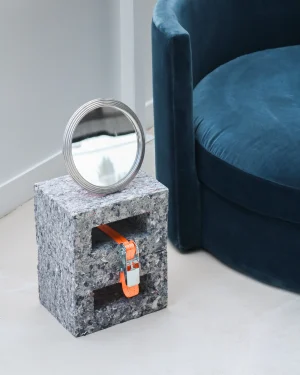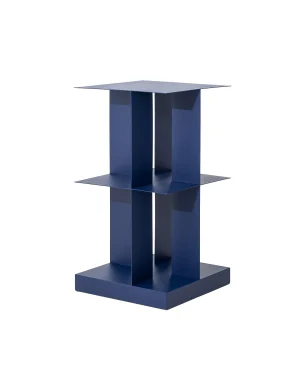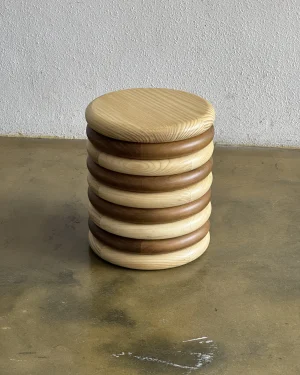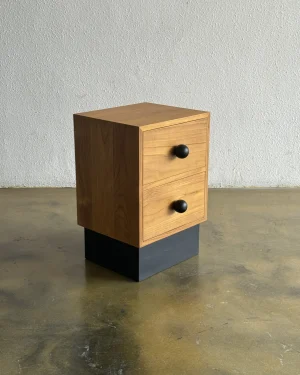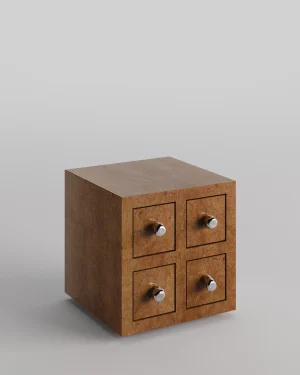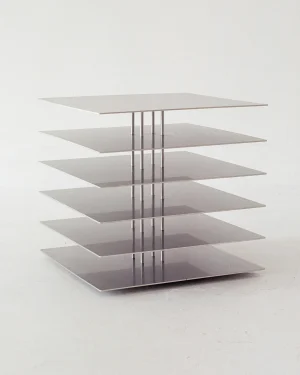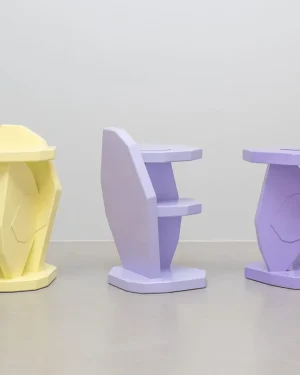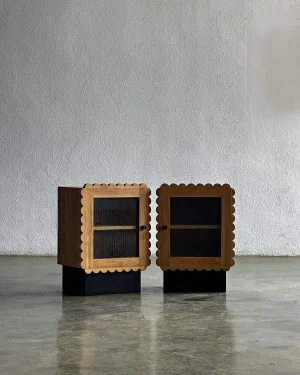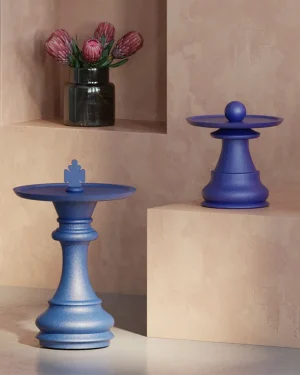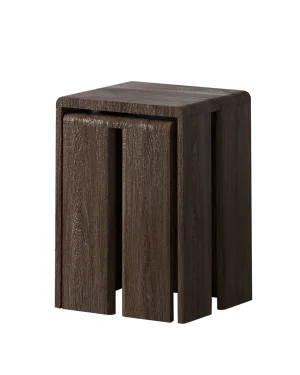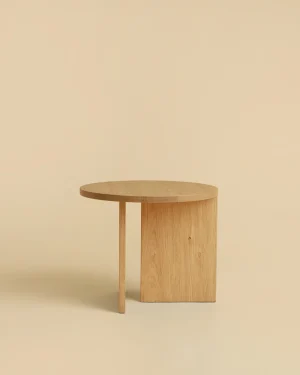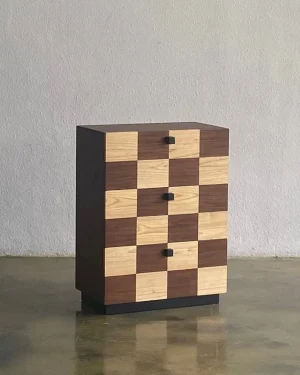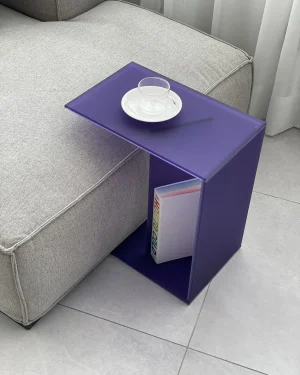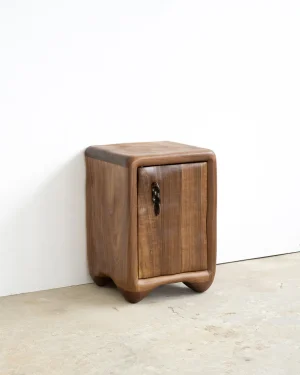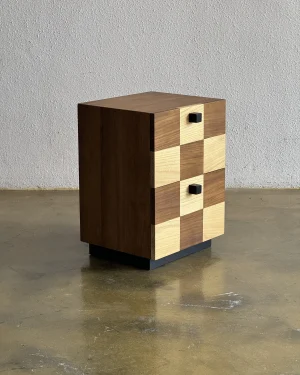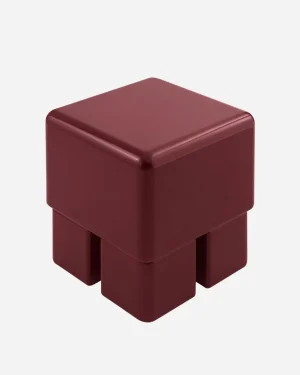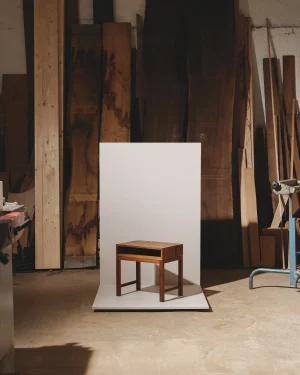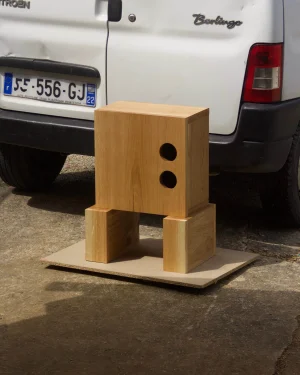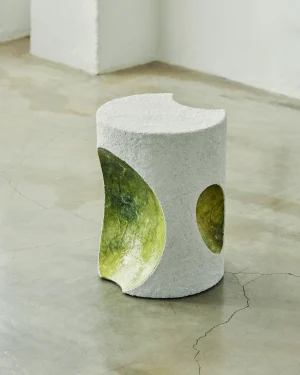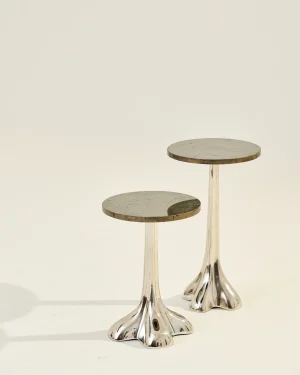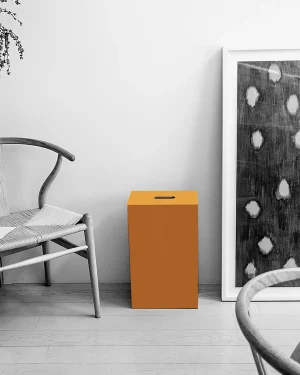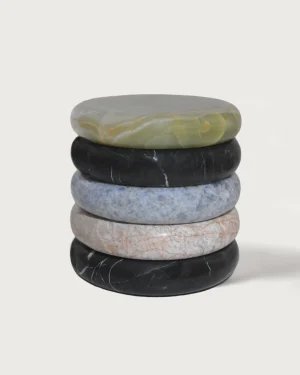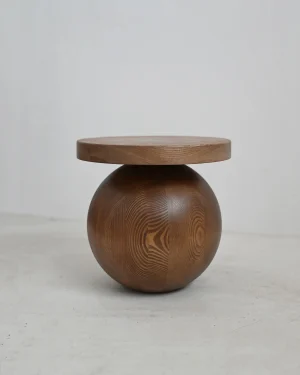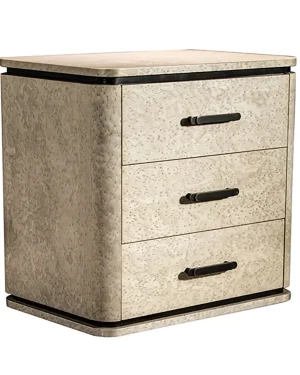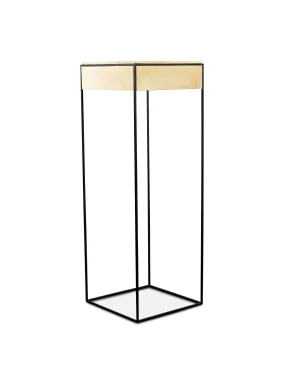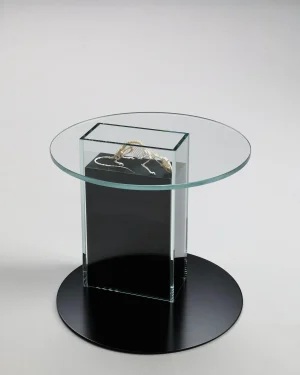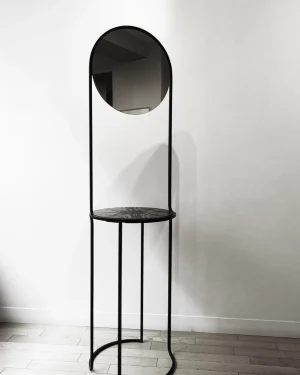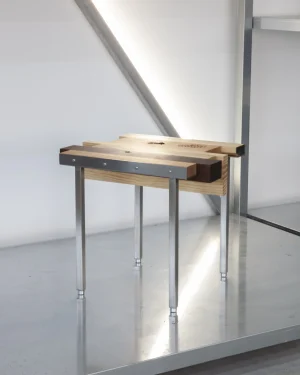-
 In stock
In stockLe Nomade / Side Table // Reimagined Textile
€396 incl. tax -

Lobster – Steel Rack & Side Table
€1.292 incl. tax -

Loop – Stainless Steel Side Table
Price Upon Request-Price Upon Request -

Hilu – Teak Side Table
€500 -

Mamun – Teak Side Table
€765 -
 In stock
In stockObjects Of Legacy No. 6 – Tall Side Table
Price Upon Request -

Coco – 4-drawer Side Table
Price Upon Request-Price Upon Request -

Patched Side Table
€1.300 -

Mamun No. 2 – Teak Side Table
€850 -

Şah & Piyon Side Table
€2.352-€6.935 -

Plus Side Table
€1.882 -

Kume – Round Oak Side Table
€1.650-€1.850 -

Coklat Xl – Checkered Side Table
€1.200 -

Trn Table / Model 1 / Solid Wood Side Table
€1.065 -

Sculptural Nightstand – Walnut Wood & Ceramic
Price Upon Request incl. tax -
 In stock
In stockCubola – Oak Wood Nesting Table
€1.745 -

Coklat – Checkered Side Table
€765 -
 In stock
In stockStak – Teak & Brass Side Table
€750 -

Trn Table / Model 5 / Solid Wood Side Table Black
€1.310 incl. tax -
 In stock
In stockPaffuto – Small Rounded Side Table
€1.100 -

Core Aluminum Side Table / Stool
€399 -

Rosa Nightstand
€3.630 incl. tax -
 In stock
In stockSensitive Wood – Oak Side Table / Cabinet
€2.040 incl. tax -
 In stock
In stockTheia Side Tables – Set Of 2
€2.100 -

The Apple Box
€450 -

Olo Nightstand Sculptural Side Table
€3.480 -
 Sold
SoldShape N.5 – Side Table Cabinet
-

Trn Table / Model 3 / Solid Wood Side Table
€1.065 -

Sen – Wooden Coffee Table
€904 incl. tax -
 Sold
SoldRian Bedside Table
-

Elena – Modern Bedside Table In Gray Birdseye Maple & Bronze
€6.600 -

Cyborg – Metal Side Table
€403 -

Ot – Steel and Plexiglas Sidetable
€580 -
 In stock
In stock“Sand in Motion” Side Table Slim
€4.840 incl. tax -
 In stock
In stock“Servant” Side Table
€9.044 incl. tax -
 In stock
In stock“THE RAT” Side Table
€4.880 incl. tax -
 Sold
SoldNonstandard 1 – Discarded Wood Side Table
-

“Shrine” Side Table
€9.758 incl. tax
Modern Nightstands & the Art and Utility of the Bedside Table
A nightstand marks the rhythm of daily ritual — the first and last object we reach for. It holds the lamp that softens the evening light, the novel waiting to be finished, the glass of water at midnight. Yet beyond function, its design contributes to the architecture of a room, connecting form, light, and proportion.
Whether crafted from marble, oak, or brushed metal, a designer nightstand acts as both utility and ornament — a point where the tactile meets the practical.
Why Nightstands Matter in Bedroom Design
A thoughtfully chosen nightstand anchors your bedside—offering a surface for books, lighting, and personal objects, while also setting the tone for your bedroom’s style. Modern nightstands often blend minimalist lines with innovative materials, while vintage nightstands bring a sense of history and character. For those who value symmetry, a nightstands set of 2 can frame the bed with balance and intention, while a single unique nightstand can introduce a focal point in more eclectic interiors.
How to Select the Perfect Nightstand: A Step-by-Step Guide
Step 1: Measure for Height, Width, and Depth
The top of your nightstand should align roughly with your mattress height, typically between 55–65 cm. This maintains visual balance and comfort. For narrow spaces, choose a compact profile or a floating nightstand to preserve openness and visual lightness.
Step 2: Decide Between Single or Double
Two matching nightstands create symmetry, while one sculptural piece offers character. In smaller bedrooms, an asymmetrical setup — pairing a nightstand with a side table — adds flexibility without sacrificing harmony.
Step 3: Choose Storage and Functionality
Consider your daily rituals. Do you need drawers for reading glasses and chargers, or an open shelf for books and display? Some modern nightstands integrate USB charging or wireless ports, blurring the line between design and technology.
Step 4: Select Material and Care Level
Each material carries its own maintenance rhythm. Marble needs sealing to protect from moisture. Natural woods like walnut and oak thrive with occasional oiling. Metal finishes, from bronze to brushed steel, gain beauty as they patinate with time.
Step 5: Match or Mix Styles
Matching nightstands bring cohesion, but mixing introduces dimension. Combine a Scandinavian wood table on one side and a neo-industrial metal piece on the other for balance that feels curated rather than uniform.
Materials That Define Modern Nightstands
Every nightstand tells a story through its material language — wood’s warmth, marble’s cool permanence, metal’s refined precision, and ceramic’s artisanal touch.
Wooden Nightstands
The wooden nightstand remains timeless, prized for its texture and authenticity. Solid oak conveys strength and lightness, while walnut offers rich tones ideal for sophisticated interiors. Pale ash or birch enhances Scandinavian and Japandi styles that favor calm, tactile simplicity. Reclaimed wood nightstands, with visible knots and wear, embody biophilic design — design rooted in natural imperfection.
Metal and Steel Nightstands
A brutalist or industrial metal nightstand introduces visual edge. Stainless steel and aluminum feel clean and contemporary, while aged iron or bronze softens with time. Metal bases often support marble or glass tops, balancing heaviness with refinement. These are perfect in loft apartments or modernist bedrooms where contrast defines atmosphere.
Marble, Stone, and Ceramic Nightstands
A marble or travertine nightstand adds sculptural drama. White Carrara brings clarity, while darker marbles like Nero Marquina introduce depth. Art Deco and Maximalist interiors often favor bold stone veining as a natural ornament. Glazed ceramics, by contrast, lend character and craft — ideal for Wabi-Sabi or coastal spaces that celebrate organic irregularity.
Mixed-Material Nightstands
Designers today play with contrast: walnut and lacquer, stone and brass, or terrazzo and concrete. These juxtapositions capture the essence of soft minimalism — quiet, layered, and tactile.
Nightstand Placement: Achieving Balance and Harmony
Nightstand placement affects how a room feels — its symmetry, openness, and rhythm.
For Queen and King Beds
Use matching nightstands with mirrored table lamps to frame the bed visually. Pairing stone with wood creates natural equilibrium, while contrasting heights add depth.
For Compact Spaces
One slender nightstand paired with a stool or wall-mounted shelf can preserve openness. A floating nightstand with concealed drawers adds storage without bulk.
For Large Suites
Vary scale intentionally: a robust side table on one side, a narrow chest on the other. Hang a sconce above for layered light, or frame the setup with a mirror to expand visual space.
How Tall Should Nightstands Be?
A common question is, “How tall are nightstands supposed to be?” The ideal height for bedroom nightstands is typically level with or just below the top of your mattress—generally between 55–65 cm (22–26 inches). Tall nightstands can complement higher beds, while small nightstands work beautifully with low-profile frames. For visual harmony, avoid pieces that sit much higher or lower than your mattress.
Do Nightstands Have to Match?
Designers often debate: should nightstands match? While a matching nightstand set of 2 creates a sense of order and symmetry, mixing styles—such as pairing black nightstands with wood nightstands or combining a rustic nightstand with a contemporary nightstand—can add depth and personality. The key is to maintain cohesion through color, scale, or material, even if the pieces themselves differ.
What Styles of Nightstands Are in Trend?
Today’s trends celebrate diversity in design:
Modern nightstands: Clean lines, matte finishes, and smart storage solutions.
Rustic nightstands: Reclaimed wood, organic shapes, and tactile surfaces.
Wide nightstands and large nightstands: Ample storage and dramatic presence.
Nightstands with drawers: Ideal for keeping essentials organized and surfaces uncluttered.
Unique nightstands: Sculptural forms, unexpected materials, or bold colors like blue nightstands.
For a timeless look, consider white nightstands or black nightstands—both versatile and elegant. For collectors, antique nightstands or vintage nightstands add narrative and character.
Do You Need Two Nightstands?
Do you need two nightstands in a bedroom? Not always. For couples or large bedrooms, a set of 2 nightstands offers symmetry and convenience. In smaller rooms or guest spaces, a single nightstand—especially a tall or small nightstand—can be both practical and visually appealing. Ultimately, the choice depends on your lifestyle, space, and design vision.
How Wide Are Nightstands?
Standard nightstands range from 40–70 cm (16–28 inches) wide. Wide or large nightstands provide generous surface area for lighting, books, and decor, while small nightstands are ideal for compact spaces or minimalist designs. When choosing, consider both your bed’s scale and your storage needs.
What Color Nightstands with a Dark Wood Bed?
Wondering what color nightstands pair best with a dark wood bed? White nightstands create crisp contrast and a modern feel. Black nightstands offer a sophisticated, monochromatic look. For warmth, wood nightstands in a lighter finish or blue nightstands can provide a subtle counterpoint. The most important factor is harmony with your overall palette and the mood you wish to evoke.
How to Style and Decorate Nightstands
Styling nightstands is an art in itself. Here’s how to decorate nightstands for maximum impact:
Layer a table lamp or a sconce for soft, ambient light.
Stack a few art books or a favorite novel.
Add a decorative object, such as a vase or small sculpture.
Use a tray to organize jewelry or keys.
Keep cables and chargers hidden for a serene look.
For large nightstands, consider a small plant or framed artwork. For compact spaces, restraint is key—one or two meaningful items are enough.
Nightstands for Every Bedroom
Bedroom nightstands: From classic wood nightstands to contemporary nightstands with drawers, find the perfect balance of style and storage.
Kids nightstands: Choose playful shapes, durable finishes, and rounded corners for safety.
Nightstands set of 2: Perfect for master suites or guest rooms seeking symmetry.
Wide nightstands: Ideal for those needing extra storage or a dramatic bedside statement.
Vintage nightstands: Add character and narrative to any space.
Nightstand Trends for 2025
Design in 2025 continues to emphasize warmth, adaptability, and sustainable materiality.
Integrated Lighting: Lamps built into the nightstand structure blur the line between furniture and illumination.
Curved Silhouettes: Rounded corners soften angular rooms, inspired by organic modernism.
Sustainable Materials: Designers experiment with hemp fiber panels, reclaimed aluminum, and bioceramic composites.
Two-Tone Contrasts: Light and dark finishes — oak with ebonized trim or marble with brass detailing — highlight craftsmanship.
Modular Storage: Adjustable trays and stackable modules reflect the flexibility of contemporary life.
For minimalist interiors, limit accessories to one or two items with balanced negative space. In maximalist rooms, layer contrasting textures — a stone base lamp beside a ceramic vessel or colored glass. In organic settings, focus on tactility: linen shades, raw wood, soft clay.
Nightstands by Room and Function
In the Guest Room
Choose simple designs with welcoming gestures: a warm lamp, a small speaker, and a carafe for water.
In the Living Room
A nightstand can double as a side table beside a lounge chair or sofa, extending the aesthetic language across spaces.
In the Entryway
Slim nightstands can function as console tables or organizers for essentials like keys and notes, offering a tactile welcome.
Care and Maintenance
Wood: Dust weekly, apply natural oil every few months. Avoid direct sunlight.
Marble: Clean with pH-neutral products, reseal annually.
Metal: Polish brass or leave patina to age naturally.
Ceramic and Glass: Use microfiber cloths, avoiding harsh abrasives.
Caring for materials preserves not only longevity but character. A well-kept nightstand gains patina, deepening its connection to the home.
Frequently Asked Questions
What’s the Ideal Height for a Nightstand?
Between 55–65 cm, aligning with the mattress top. Taller beds may require custom or two-tiered options.
Should Nightstands Match?
Not always. Symmetry offers balance, but contrast offers depth — pairing a stone pedestal with a wooden piece introduces personality.
What Are the Best Materials for Durability?
Solid oak, marble, and steel withstand wear beautifully. Reclaimed woods and sealed stone also ensure longevity.
How Can I Style a Nightstand for a Minimalist Space?
Keep the surface clear with one grounding object, such as a ceramic vase or sculptural lamp.
How Do I Add Warmth to a Contemporary Bedroom?
Mix materials — wood with linen, marble with rattan — and use dimmable lighting.
Why Choose ADORNO for Nightstands
ADORNO curates a global collection of modern and designer nightstands where craftsmanship meets narrative. Each piece reflects independent artistry and cultural perspective, uniting sustainable practice and aesthetic excellence.
From Mid-Century Modern silhouettes to Brutalist structures and Art Deco motifs, ADORNO’s collection celebrates diverse approaches to design.
Every nightstand is chosen for its form, integrity, and timeless resonance — a fusion of material intelligence and visual poetry.
Shop Designer Nightstands at ADORNO
Discover ADORNO’s curated selection of nightstands, paired effortlessly with lighting, vases, and decor. Each piece represents a meeting of function and emotion — a reminder that even the smallest details in a room can define its character.
